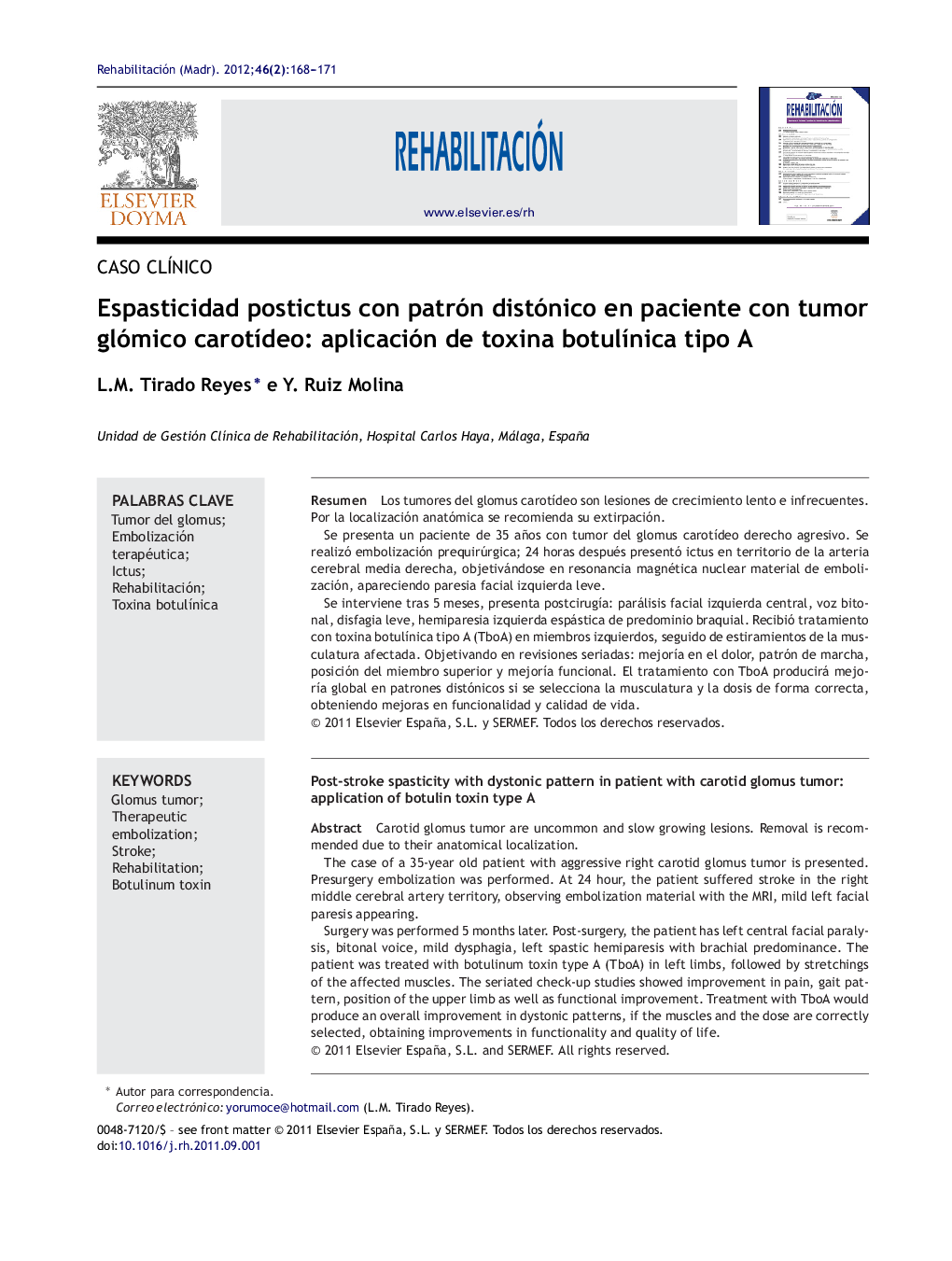| Article ID | Journal | Published Year | Pages | File Type |
|---|---|---|---|---|
| 4085040 | Rehabilitación | 2012 | 4 Pages |
ResumenLos tumores del glomus carotídeo son lesiones de crecimiento lento e infrecuentes. Por la localización anatómica se recomienda su extirpación.Se presenta un paciente de 35 años con tumor del glomus carotídeo derecho agresivo. Se realizó embolización prequirúrgica; 24 horas después presentó ictus en territorio de la arteria cerebral media derecha, objetivándose en resonancia magnética nuclear material de embolización, apareciendo paresia facial izquierda leve.Se interviene tras 5 meses, presenta postcirugía: parálisis facial izquierda central, voz bitonal, disfagia leve, hemiparesia izquierda espástica de predominio braquial. Recibió tratamiento con toxina botulínica tipo A (TboA) en miembros izquierdos, seguido de estiramientos de la musculatura afectada. Objetivando en revisiones seriadas: mejoría en el dolor, patrón de marcha, posición del miembro superior y mejoría funcional. El tratamiento con TboA producirá mejoría global en patrones distónicos si se selecciona la musculatura y la dosis de forma correcta, obteniendo mejoras en funcionalidad y calidad de vida.
Carotid glomus tumor are uncommon and slow growing lesions. Removal is recommended due to their anatomical localization.The case of a 35-year old patient with aggressive right carotid glomus tumor is presented. Presurgery embolization was performed. At 24 hour, the patient suffered stroke in the right middle cerebral artery territory, observing embolization material with the MRI, mild left facial paresis appearing.Surgery was performed 5 months later. Post-surgery, the patient has left central facial paralysis, bitonal voice, mild dysphagia, left spastic hemiparesis with brachial predominance. The patient was treated with botulinum toxin type A (TboA) in left limbs, followed by stretchings of the affected muscles. The seriated check-up studies showed improvement in pain, gait pattern, position of the upper limb as well as functional improvement. Treatment with TboA would produce an overall improvement in dystonic patterns, if the muscles and the dose are correctly selected, obtaining improvements in functionality and quality of life.
